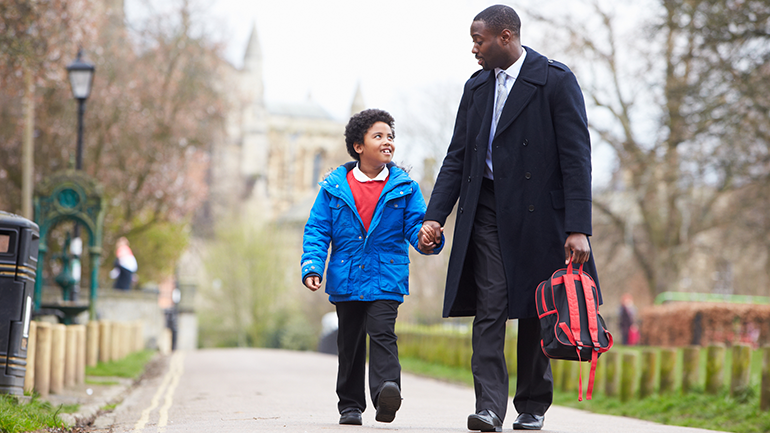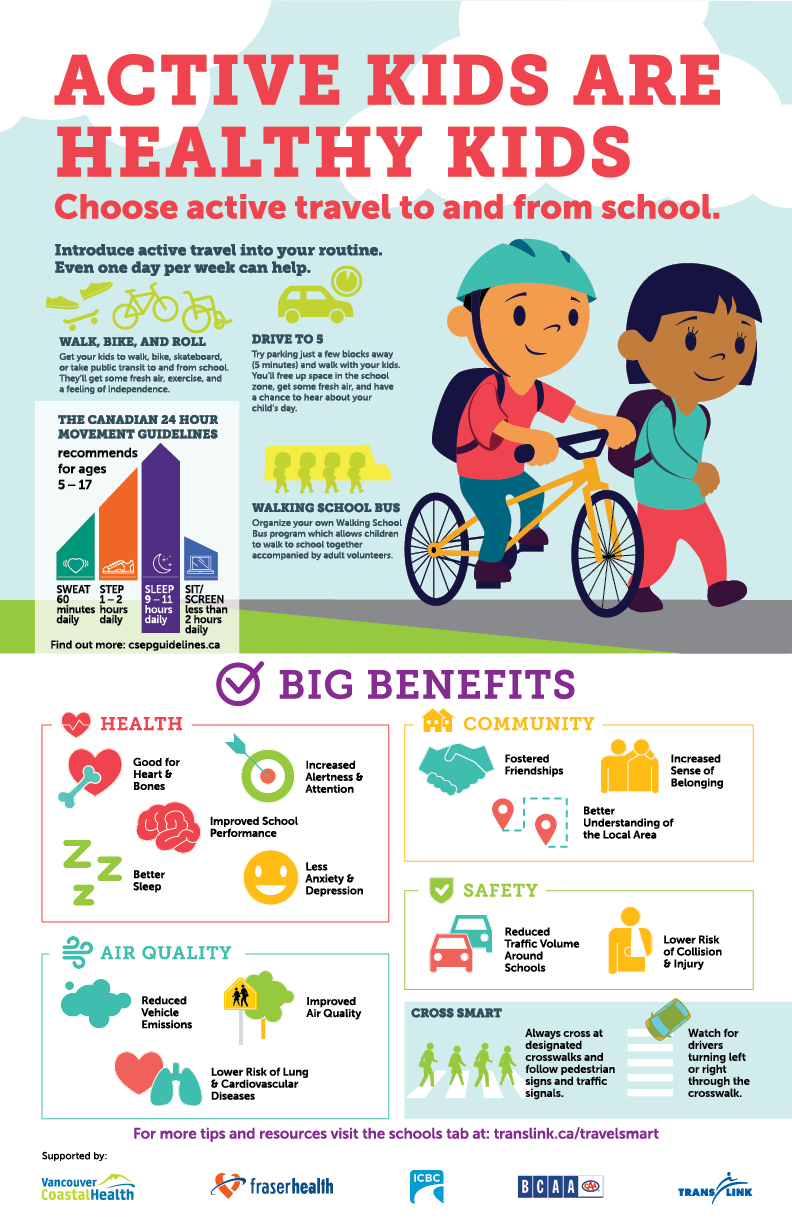
Start small: walk to school once a week and see the difference it can make to your child’s physical and mental health and school performance and enjoyment.
What if you were told one simple change to your child’s daily routine could reduce their risk of obesity, improve their mental health, reduce their risk of asthma and increase their performance in school? The good news is this change isn’t hard to make. Research shows children who walk or bike to and from school earn all of these benefits, and more.
When you’re a busy parent, changing daily routines to include walking or biking to school can seem like an impossible task. But the benefits are so great that I challenged myself to overcome my personal barriers to making this change for my children’s health, and you can too.
Walking to school helps keep kids healthy and engaged
The health benefits are hard to ignore, especially when you work in public health! They include:
- Children who walk and bike to school tend to have higher physical activity levels, helping them achieve 60 minutes of recommended daily activity, which in turn helps prevent childhood obesity and supports healthy bones.
- Children who walk to school have higher academic performance, longer attention spans and are more alert. They have better verbal, numeric, and reasoning abilities, lower levels of stress during school and higher levels of happiness, excitement and relaxation on the journey to school.
- Walking to school can foster personal growth by developing a sense of independent decision making, emotional bonds with peers and road and traffic safety skills.
Even though I clearly see the benefits of active transportation to school, obstacles remain. The two major challenges include logistics: the morning time crunch and work scheduling issues and then safety concerns: the risk of unsafe drivers and concerns about stranger danger.
All of these obstacles can be overcome with a little planning. A practical way to address children’s personal safety is to make sure there is an adult accompanying your child. Try to organize walking school buses or a biking buddy system with neighbourhood parents. Parents can also take turns to supervise the children to accommodate work and commutes.
Making the change to walking to school is easier than you think
To tackle common road safety-related fears ICBC and the Canadian Safety Council offer these tips:
- Map it out. Plan your child’s route with them ahead of time. Review street names and landmarks to help orient them.
- Listen. Ensure you and your child do not use smartphones or listen to headphones during your walk so you can hear approaching traffic.
- Road rules. Make a fun and interactive game out of guessing the correct traffic signs and meanings with your child.
- Be seen. Make sure your child wears bright clothes and/or reflective gear especially at night and in poor weather.
- Set a good example. Never jaywalk or run to cross the street. Where possible, cross at intersections with a pedestrian crossing light or marked crosswalk.
- Railway crossings. Only cross railway tracks at designated signals or signs and watch your step. Discourage play on or near the tracks.
- Look. Teach your child to ensure all vehicles stop before they step on to the road. Teach them to make eye contact with drivers before crossing, even when the walk signal is on.
- Parked vehicles. Avoid shortcuts through parking lots or around parked cars, as it’s harder for drivers to see small children.
- Equip your child for safety. Make sure their bike and helmet are the right size. Your child’s first bike should be equipped with a bell and reflectors.
- Set the following safety rules for young children:
- No playing on the road.
- No riding on busy streets.
- No riding at night.
- Stop for all stop signs.
- Ride on the right with traffic.
- Remember the most common causes of bicycle injuries are:
- Riding out of the driveway.
- Running the stop sign.
- Riding in the dark.
- Riding in a group and following the leader’s actions.
- Falls and resulting head injuries.
So this new school year, I’m challenging myself – and you – to make a real effort to get to know neighbours who travel to the same school and start a walking school bus or buddy biking system. Start small: do it once a week and see the difference it can make to your child’s physical and mental health and school performance and enjoyment – not to mention your own health.

